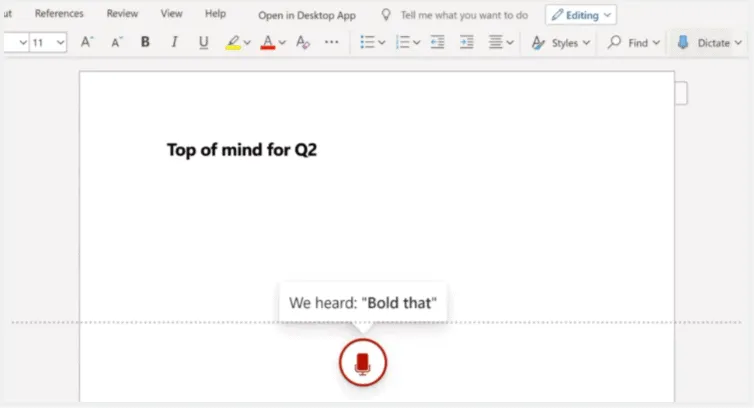
Knowledge base
September 07, 2020
Microsoft Word now with audio recording and uploading for transcription.
In short, despite offering a wealth of word processing features, Microsoft Word strangely lacked a built-in transcription tool to quickly convert voice recordings into text. The long-requested feature has finally arrived, albeit in a limited form, as it initially supports only one language and is only available to Office 365 users on the Internet.
If your work requires a lot of work with documents or routinely organizing minutes of meetings, trancribing can be an invaluable tool to save time or to capture that important detail that was accidentally overlooked the first time.
Microsoft has now added support for transcription in Word for Office 365 subscribers. The web app, where Transcribe is initially available, uses the company’s Azure Cognitive Services AI to record and convert voice to text in real time, and also works for audio and video files uploaded through your PC browser.
Compared to other transcription services such as Otter.ai or Google’s Live Caption, Microsoft’s transcription is quite limited in terms of functionality and availability, as it currently only supports English (EN-US) and requires Microsoft Edge or Chrome to work. Microsoft plans to add this feature to mobile versions of Office later this year, but has not specified when (and if) the service will come to its desktop apps.
For users on the Internet, Microsoft offers unlimited recording and transcribe within the Word app, but has limited uploaded recordings to five hours per month. Each file must also be no larger than 200MB and must have the .mp3, .wav, .m4a, or .mp4 format.
For now, the feature is a fun freebie for Office 365 customers, and its inclusion in Microsoft’s productivity suite is likely to lead to widespread acceptance among organizations worldwide.

Word’s dictation capabilities have also improved, as Microsoft has now added support for more natural expressions such as “start list” and “bold last sentence”. If you say “point point,” an omission sign is inserted if you’ve forgotten the original word, while if you say “smiley face,” the corresponding emoji will be added to your document.
These voice commands as part of Word’s dictation feature are now supported both on the Internet and mobile for Office 365 subscribers and are expected to appear on the desktop (Word for Windows and Mac) by the end of this year.
Source: Techspot
Want to know more?

Related
blogs
Tech Updates: Microsoft 365, Azure, Cybersecurity & AI – Weekly in Your Mailbox.









